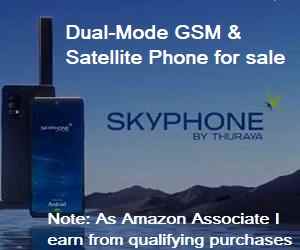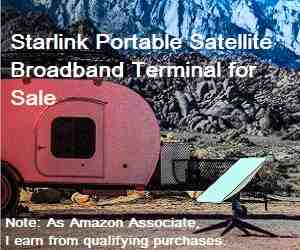Read more here about the
O3B project. It is quite amazing, like a series of giant 12 legged insects striding round the equator and plonking their feet in exactly the right places for teleports and customer service.
Their Tier 1 service, involves aiming (and tracking) the centre of a satellite beam directly at your antenna site. The antenna site, comprising two >3.5m Ka band motor driven tracking antennas, will be provided and installed by O3B and is intended to provide a trunk traffic connection to a teleport, e.g. in southern Europe, connected to the terrestrial internet. 180 MHz of bandwidth will be available both ways. Bit rates will depend on the dish size, modems, modulation method and the weather.
To make good use of such capacity you need your site located where you have the possibility of connecting up a large number of customers. Although the site equipment would be provided by O3B you would need to make a local terrestrial network investment in wireless, cable etc to local businesses, phone companies, cafes etc. 300 Mbit/s would serve 20,000 PCs, at 15kbit/s per PC. Having a single high bit rate portal to the internet is similar to a submarine fibre cable arriving at the coast. If you can get a price for just a few Mbit/s, bought at the antenna site then that would suit a smaller local network, as you are not committing to buy the full 300 Mbit/s.
There are 10 customer beams on the satellite and I would expect some to be used for Tier 1 access as above, while others are used for Tier 2 access. In Tier 2 access mode they suggest 10-50 cell phone sites per beam, each with 2 - 10 Mbit/s. I note that the customer is to be responsible for buying the Tier 2 sites, which will each involve pairs of 1.2 - 1.8m antennas. This is more like current VSAT operation with the difference that the pairs of antennas will be very "hi-tech" and require motor tracking all of the time. The 16 O3B satellies will keep rising in the west, going almost directly overhead (for south Ghana), and setting in the east and the antennas will need to keep flipping back alternately, every 90 minutes or so. iDirect have been preparing for Tier 2 operations and reviewing the problems of doppler shift on modem performance. In Tier 2 mode it is envisaged that the sites will be located across the full diameter of the 450km beam. If more than one beam is needed consider how they might be best pointed to share with an adjacent country.
The O3B project is very impressive but its novelty does means that all involved will, to some extent, be risk taking pioneers. If it works it will certainly help with communications for people in equatorial countries.
The alternative is to continue with the traditional GEO satellite service. Prospects for GEO are for gradual price reductions at best, rather then the dramatic price reduction that is expected with O3B. To compare Tier 1 services ask about leasing entire transponders and useage with larger dishes and 16QAM. To compare Tier 2 compare with prices for dedicated medium sized dish VSAT service, such as Comtech CDM570L with adaptable demand assigned SCPC. Tier 3, direct to the small business, cafe or home, is not mentioned; I guess because the cost, skills and maintenance of the tracking antenna systems is too much to contemplate. Traditional VSAT developments may well move to a multi-spot Ka Band system for Africa, perhaps as a follow on to the European KA-SAT (Eutelsat/ViaSat/DOCSIS), similar to Wildblue and Tooway.
Best regards, Eric.


